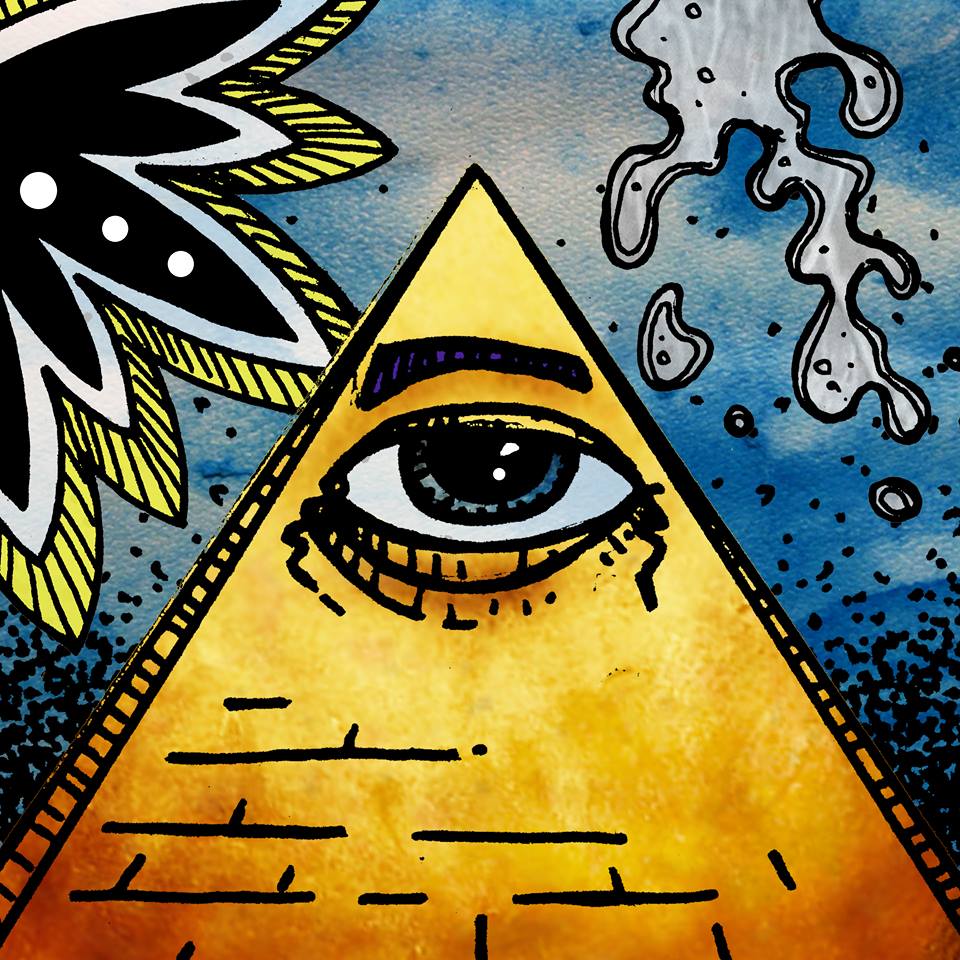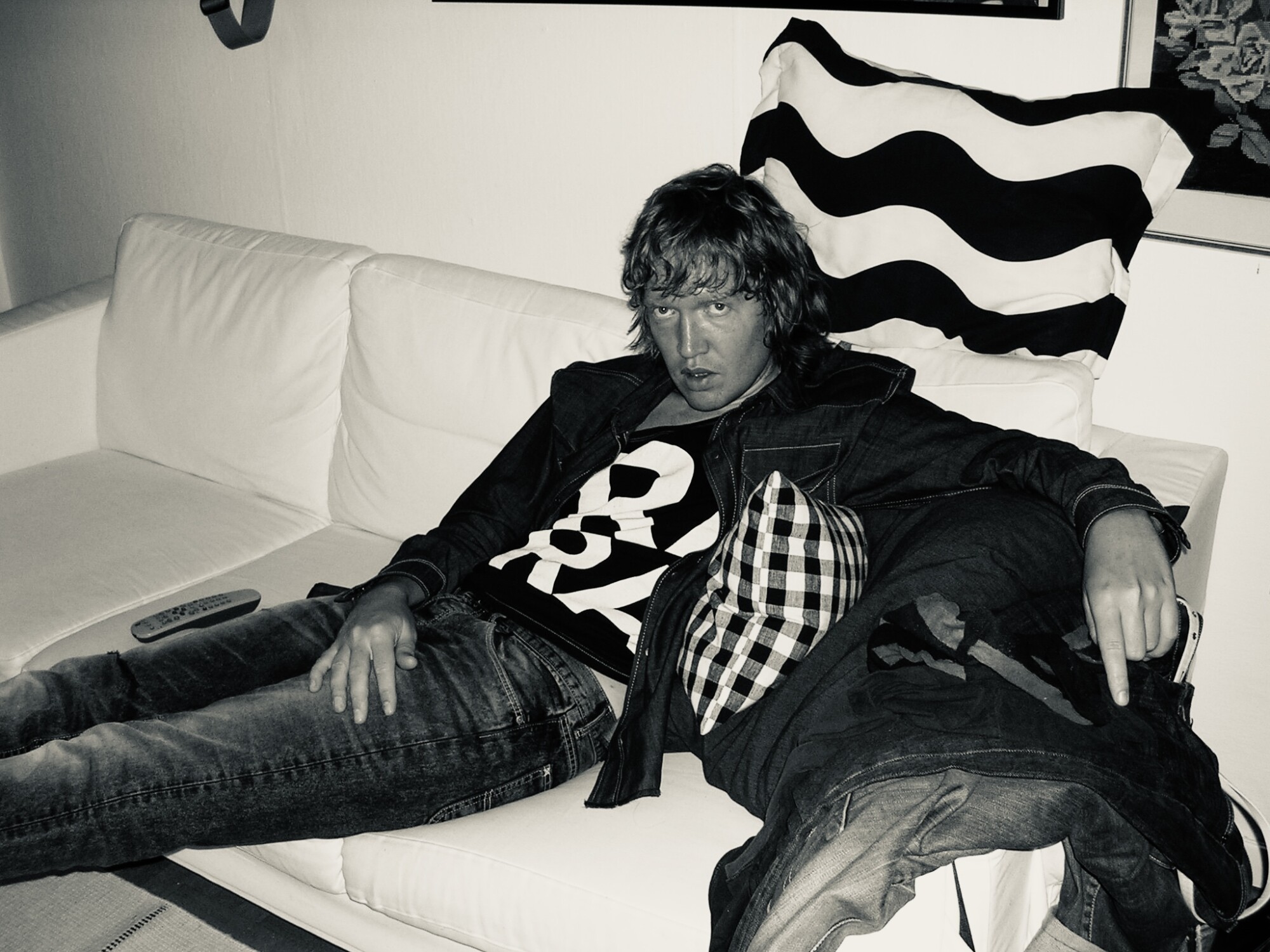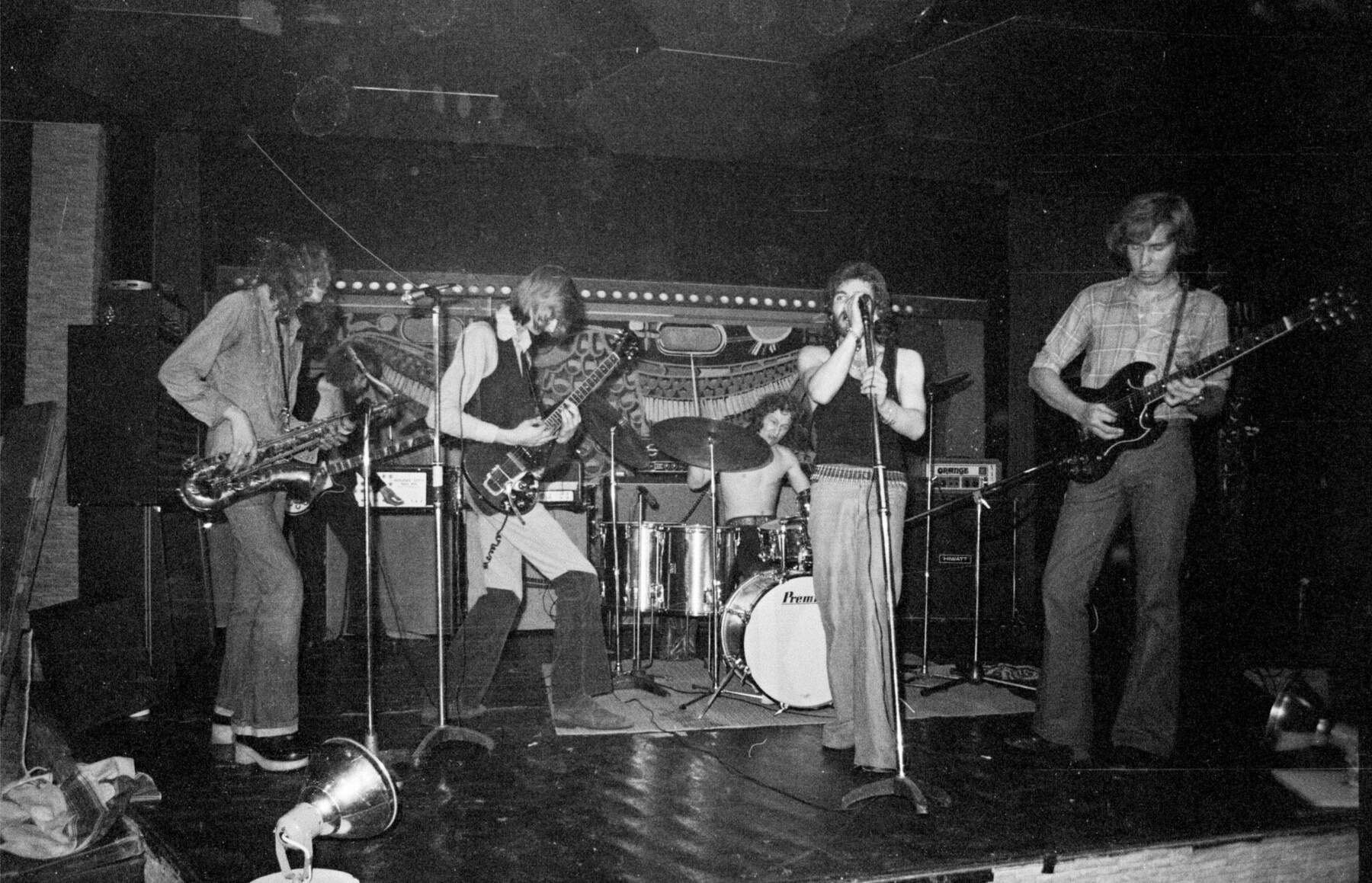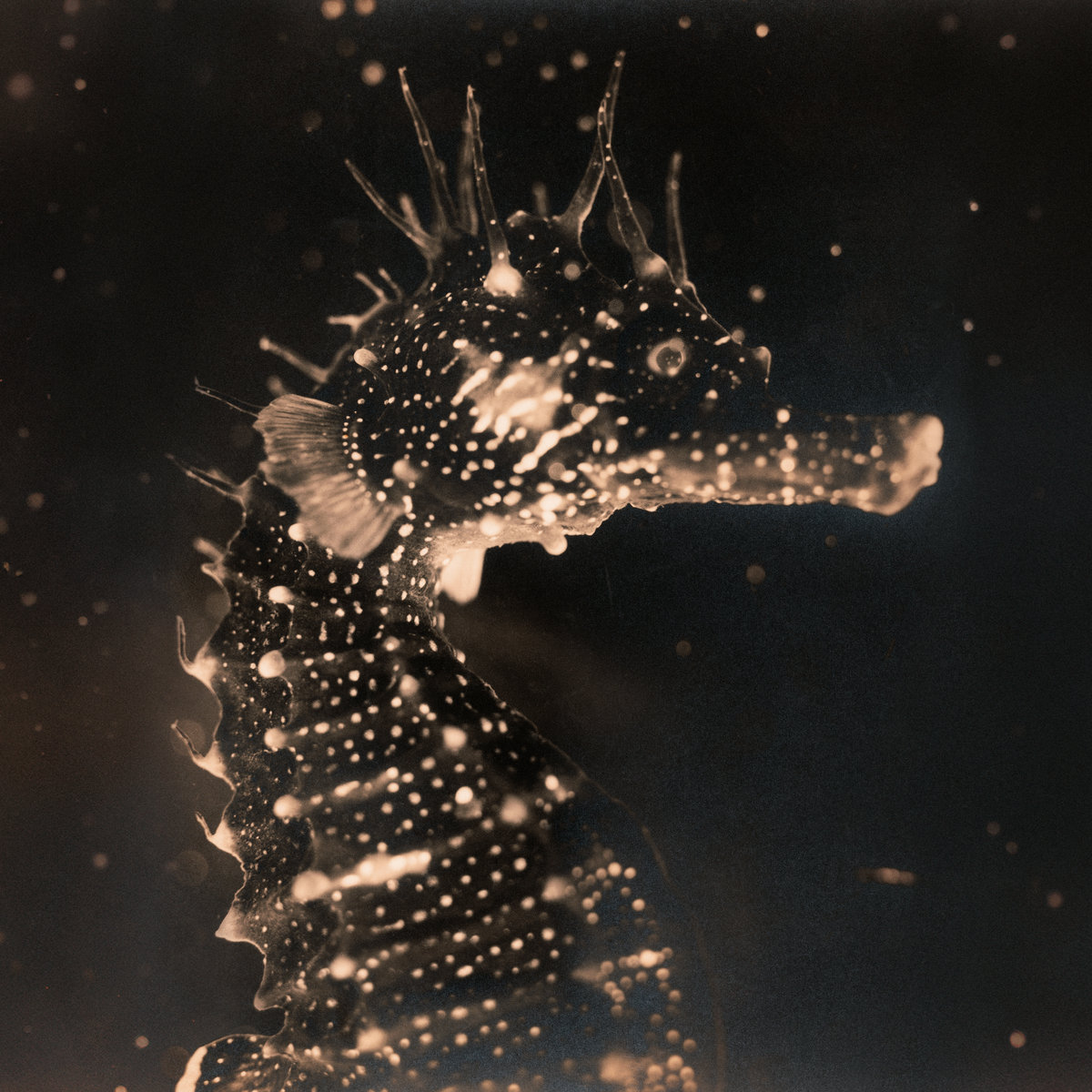Songs Like Sun-Soaked Snapshots: An Interview with Björn Synneby on L’Île Volante
Björn Synneby has been around. Whyte Seeds, The Sun, Pacific. Bands that left footprints if you were paying attention. Now he is back with something different but just as honest. L’Ile Volante is the name.
The record spins like an old photo album soaked in sunlight. Faded edges, handwritten notes in the margins, songs that feel like snapshots of some parallel summer. Think early McCartney without the ego, or some lost Californian gem hiding in a thrift store bin, warped slightly from heat but all the better for it. Eleven tracks, each one warm and weird in its own way. The harmonies lean in like an old friend whispering a half-remembered tune. The melodies feel lived-in, like they were written with bare feet on a wooden floor. The record is pure and simple. A little crooked, a little hazy, but deeply sincere. Only 300 copies exist, like a secret passed from hand to hand, meant for those who still listen with their gut. This is someone still wide awake at the wheel, still following that stubborn need to make something that matters. File under music that does not care if it fits. It just wants to stick with you, quietly and forever.
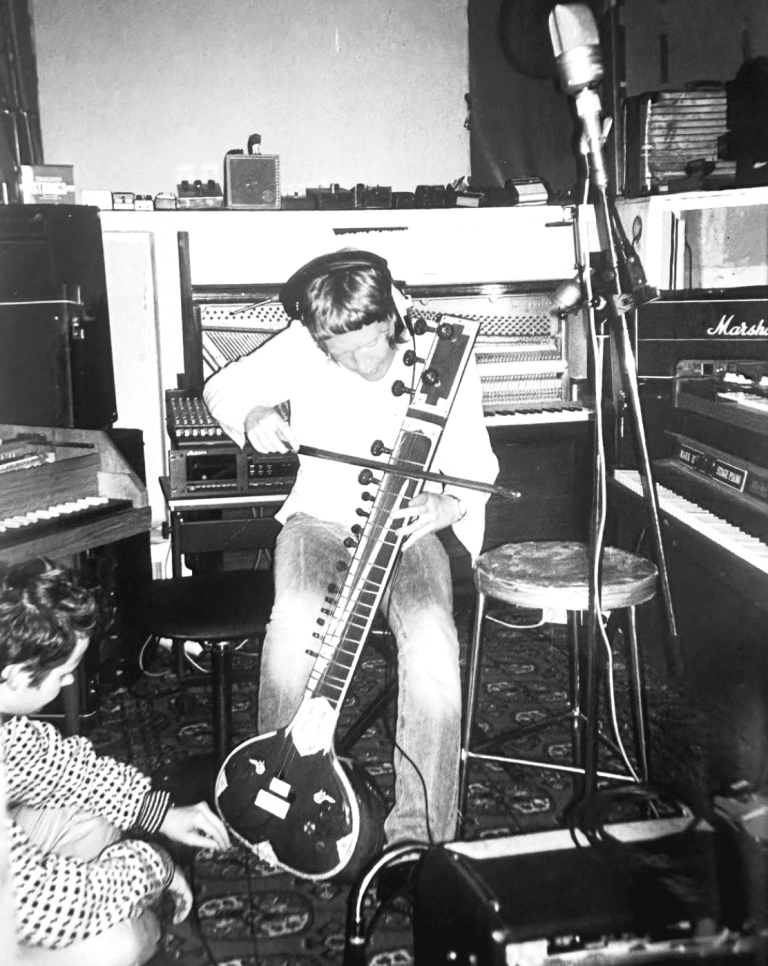
“…dreaming of other worlds while gently playing guitar.”
So, ‘East of Gothenburg’…does that make you the McCartney of Västra Götaland? Or is this more about escaping the shadows of your own past projects?
Björn Synneby: I grew up east of Gothenburg, so I have that perspective on things. Watching the town from the hills above my parental home. Watching the grown-ups going to town to earn money while I was watching. Like the fool on the hill, which Paul McCartney wrote.
You’ve spent decades making music in different bands—why now, why solo, why L’Île Volante? Is this a “finally found the time” moment or a “had to do this before I combust” kinda thing?
Well, I made music and sang with a country band for some years and that was great fun! Through the years, I have gathered a small but beautiful collection of songs with three-part harmonies and a California vibe, and I wanted to combine that with some lap steel songs I made. So I just started to collect songs and structure this west coast-ocean-hippie-kind-of-world up. If you look back, you can find elements of this world in both Pacific and The Sun. I love being in that world. It is kind of that world described in the David Crosby song ‘Guinnevere.’
There’s a rawness to this record…like it’s stitched together from hazy memories and sun-faded postcards. Was that the goal, or did the songs just fall into place that way?
That’s a nice description of the songs. Some songs I made ten years ago, but the recordings are made in the last years. I think the rawness you talk about comes from the fact that I do the best I can with my limited studio equipment and limited time. Some of the songs are made out on the porch while my wife prepared the food for our kids. So, the songs are recorded and composed in the hasty moments between the responsibilities in the life of a family with small children. These golden nuggets of moments of own time are spent with bird sounds on the balcony, dreaming of other worlds while gently playing guitar.
Air, McCartney, Californian harmonies…those are some pretty lush influences for what feels like such an intimate, lo-fi record. Was there ever a temptation to go full-blown cinematic with it? Or is minimalism the whole point?
Of course I was tempted to go full-blown cinematic! But then again, I had limited time and I had decided to make it grand with my limited resources. To find the greatness within simplicity. A bit like the plein air painters of the turn of the century.
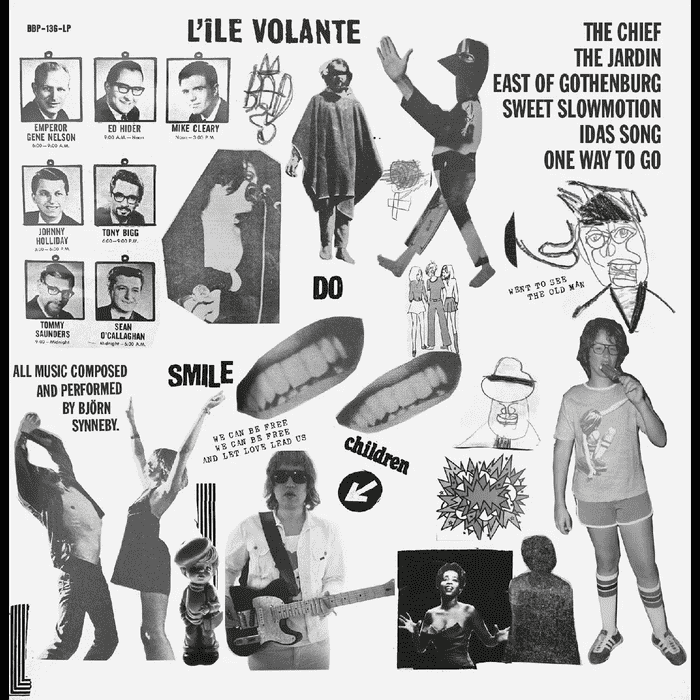
“I try to describe defining moments in my life.”
How much of ‘East of Gothenburg’ is nostalgia, and how much is reinvention? Do you hear your past lives in these songs, or is this a clean break?
I try to describe defining moments in my life. So I guess it’s reinvention of the feelings of that specific moment. Or you can say that I tried to reinvent the moment itself. For instance, the song “Birth of the Soft” is drawn from one of my earliest memories of a woman singing a solo at a midsummer festivity when I was five years old. That was a defining moment of my life. I still do not know what song it was. I try to hum it to my old mother, but she cannot remember it.
This feels like a “living room at golden hour” kind of record—where and how was it actually recorded? Home setup? Old tape machines? Midnight experiments?
It is mainly recorded at my home studio or in a bedroom setting. I have access to an old reel-to-reel recorder, but it has too much noise coming from it. Anyway, the notion of the golden hour at the living room kind of recording makes me feel good about this music. I imagine people going around with cocktails while recording bossa nova claves.
Some of these melodies feel like they could’ve drifted in from a half-remembered AM radio dream—what kind of sounds or records were in rotation when you were making this?
The last ten years I have listened a lot to jazz, like Gerry Mulligan’s ‘Night Lights,’ for example. Also a lot of Crosby, Stills & Nash, and Victor Jara with Quilapayún. I also listened very much to Stereolab and their magical album ‘Dots and Loops’.
If ‘East of Gothenburg’ were a place, what would it look like? Is it a real place for you, or just a headspace you needed to visit?
I was in Stockholm a couple of weeks ago having a release party for the album, and I could not avoid thinking about Stockholm as east of Gothenburg. But… the name comes from my upbringing at my family house in Partille, east of Gothenburg. There’s a line in one of my songs, The Chief: “I can see the living riding in their freeway every day in a silver snake to town. I’m here.” Sitting like the fool on the hill, watching the living—or the partakers of society—ride west into town.
Would love to discuss Whyte Seeds. What was driving that band in the early 2000s? Were you guys consciously trying to tap into that whole “garage rock revival” moment, or did it just happen naturally?
We had spent a year starting up and playing concerts with the band The Sun, in which we had brass, sitar, guitars, three-part harmony vocals, pianos, and so on. There was so much happening on stage that we needed to focus our cool and energy into a rock band. Since we were active in the Gothenburg mod environment, we composed ‘60s rhythm & blues songs. We added some highly energized guitar work which gave some weirdness to the mix. We recorded with producers that were involved with Soundtrack of Our Lives—a band from Gothenburg—and things happened pretty fast after that. I remember opening up for The Strokes. We played frisbee with them in a park.
Whyte Seeds’ Memories of Enemies had that swagger, that feel—what do you remember most about making that record? Any wild studio stories?
I remember playing loud amps and adding feedback here and there. I also remember Johan Forsman, a producer that recorded S.O.O.L., giving me the hook of ‘Lost My Love.’ Another memory was when a seagull sang through the ventilation shaft. If you listen closely to the title track, you can hear it at the end. We had a great time.
Then there was The Sun—a different energy. What was the shift like?
The Sun was the mother of all music creation for me. It is the stylistic root of L’Île Volante. The energy was warm and flamboyant. Gardens and wine. Girls, girls, and sitars in parks. It was young people trying to make something of themselves. We really had something, but we had to focus the energy. Some of us started their studies, and some of us moved on to the rock’n’roll—to Whyte Seeds.
Whyte Seeds toured hard… what’s a memory from the road that still makes you laugh (or wince)?
When Hank peed in the smoke fluid canister right before a show somewhere in Sweden. We came in, started the show, and the smoke machine delivered smoke—with a smell of freshly baked urine.
Also, I have a fond memory of when we were at Bratwurstherzl in Munich. Right next to our table, the president of Bayern sat with her bodyguards and had a night meal. We were all exhausted from extensive touring and sat in silence. Then Axel had the first taste of his sausage and started to cry with happiness from the moment we shared. The president of Bayern noticed and smiled. We had a quick toast and went on eating bratwurst.
Looking back, do you feel like Whyte Seeds and The Sun got their due, or are they those “right place, wrong time” kinds of bands?
We just tried to have fun and succeeded at that. We wanted to explode into the times and did our thing just the way we wanted to. So, to be frank, there was no wrong time. We certainly were in the right place. Gothenburg was on fire back then.
Would love it if you could also talk about the Pacific! and what led to it.
Well, the rock’n’roll myth had a bit of a bad taste in my mouth, so I started to try to make my own music with a base made of the songs that Axel in Whyte Seeds said were too gay.
A good friend, Daniel Högberg, and I sat down and chiselled out melodies and sounds for two or three years and started to use Myspace to reach my key figures in the Paris scene—the scene where Air and the artists around their band had their creative space.
We managed to get in touch with some great people who really helped us push the Reveries album forward toward the Paris/London electronic scene. We released it with the same man who is now behind the L’Île Volante label—Busy Bee, Ismail Samie. He is a legend in his own right.
We played a lot in London and Paris and made good friends with a lot of interesting Parisian pop/electro people of that time.
What was the Gothenburg scene like when you were coming up? Which clubs, which bands, which moments shaped you the most?
The Sun hung out in clubs. We were always out in clubs.
We were, of course, at Club Lolita, which was Ismail Samie’s club where the indie crowd hung out. There were a lot of clubs for bands to play at, and we did the Gothenburg circuit. I don’t remember the names of the clubs, but our main role model in the Gothenburg pop scene was The Soundtrack of Our Lives.
Some of us must have listened to Eggstone as well, but they were from Malmö, where the pot was boiling just as much as in Gothenburg, if not more.
The place that shaped me was the park Vasaparken and the apartment of Olle Hagberg, where our vocal rehearsals were. That apartment was a cultural boiling pot of its own.
First ever gig you went to—who was it, and did it totally blow your mind or just make you want to start a band?
It wasn’t the first, but we went to see Terry Riley in Stockholm, and that session opened up some signal highways in my brain.
The one gig that changed my life and got me into music was my first gig with my own first band.
My trio played Jimi Hendrix covers and I sang. Someone was making out in a corner. I just felt really high from that gig. The effect lasted forever.
Gothenburg is known for its underground scene(s). Where did you fit into all that? Were you the kid sneaking into shows, or did you just start making noise in a basement?
I went away from Gothenburg when I was 18 years old. When I came back, I was 26. It was then it started for me with The Sun.
I had missed out on Lädernunnan and the whole punk rock movement and the coolest underground clubs.
But I tuned in to the pop scene and the emerging electronic movement.
Who were the local heroes back then? Was there a band that made you think, “Okay, this is possible, I need to do this”?
For me, Björn Olsson in S.O.O.L was the main reason I thought I could do something good.
He released his first solo album with Ismail Samie’s record label, ‘Dolores,’ and that album was pointing me in a good direction—the prog-hippie-dream-pop direction.
If you had to describe the Gothenburg of your youth in a single sound—what would it be?
The clang of a rehearsal space door? The hum of a club before a gig? A certain record spinning in someone’s flat?
Jean Michel Jarre ‘Oxygene’—the swooshing sound at the beginning of the B-side.
What’s next? Do you see L’Île Volante as a one-off escape or a long-haul journey? Or do you even think that far ahead?
I’m already thinking about the next record. I dream of jamming with my friend Said Belhaj on my front porch at my mountain cabin, way up in the wilderness of Jämtland. I know it can be magic. Said has a very special energy.
I would like to continue creating my vocal-based songs.
L’Île Volante have a gig in Stockholm on June 4th. I want to bring my music to the audience. I know it can be pure magic with the other singers and guitarist.
Klemen Breznikar
L’Île Volante Instagram
Busy Bee Production Website / Facebook / Instagram
